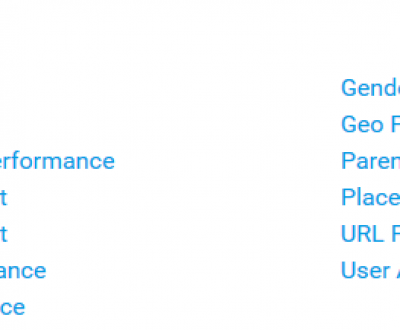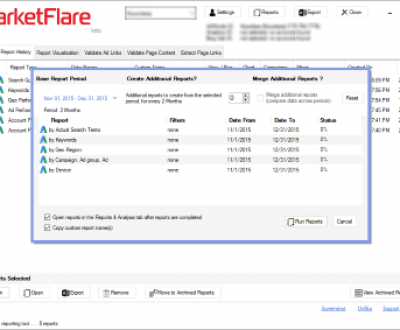PPC Tailspin – When Head Terms are Not Meeting ROAS Goals
Pay Per Click Head Term ROAS Challenges
For PPC clients struggling to meet ROAS goals, we usually set out to find a solution with PPC best practices. In such cases we apply tactics of increasing the keyword Quality Scores (QS) and optimizing existing campaign structure and elements; also, adding many long tail keywords along with corresponding landing pages related particular descriptive words.
The PPC budget and account keyword performance history are important factors in the PPC campaign optimization process. In case of an insufficient budget and a poor keyword performance history, Google could apply a cost per click premium on your head terms and your long tail terms could realize minimal impression share. Over the course of 1-2 weeks, after much pushing of buttons and pulling of levers, it could become clear that you are not getting impressions on most of the long tail keywords. When this happens, then the big questions arise:
- what do you need to do to pull out of the PPC tailspin?
- is it possible to obtain positive ROAS with head terms?
Yes, the head terms are obviously important as part of a PPC campaign but does your business have the budget, reputation, and maturity in business to compete with aggregators and businesses that have 10+ years of customer acquisition and reputation-building under their belt?
Figure Out & Measure Your Approach, Then Start Fresh
A conclusion we might reach is that our client is hard-pressed to challenge the “big fish” with head terms. What can be done if the account historical performance and 2 weeks of experience reflect that the economics of the approach with head terms do not work out positively? In this case, to pull out of a PPC tailspin we suggest to:
- trim head terms to 10-20% of the budget and to focus primarily on long tail keywords
- step back and re-evaluate your entire business and marketing strategy as a challenger against other bigger brands; take a holistic approach to PPC success
- launch the PPC campaign in a new AdWords account that is not affected by negative performance history (against AdWords’ Policy, but certainly justifiable in some situations); dealing with a poor QS history can otherwise take 1-4 weeks to deal with
Besides the usual campaign management, these steps require considerable effort and the second point is especially important. While we can move forward with PPC campaign management tactics and work on the long tail to incrementally improve performance, we had better start to dissect some core business issues that are related to PPC success.
Be Aware of Brand Equity Advantage
A stark reality of the “big fish” is that they usually have an advantage of an already recognizable brand. They benefit from significant number searches on their brand that they buy for less than anyone and their high CTR boosts their QS. They usually have a bigger budget. In short, big brands are perched at the top of a PPC upward spiral related to high CTR and Ad Position and low CPC. Consequently, good ROAS comes easier for recognizable brands.
Plan to Break Out of Your Industry Mold
It turns out that the general business evaluation and planning also solves how we could possibly be successful with PPC head terms. Most businesses require very significant investment in time to iron out general business, branding, value proposition, and online marketing implementation strategy. Again, PPC Marketing activity does not solve these general issues and they must be ironed out before venturing to grow business with PPC head terms.
Here are some important questions and topics that any business must think about:
- What makes your business, products, or services distinct? Can you communicate this in one sentence? How does this distinction break with the immediate past and status quo of the industry?
- What does your brand deliver beyond the practical needs? (secure, cool, intelligent, sexy, successful – what emotions does the brand inspire?) While it might seem silly for a business to consider and strategize about what type of emotional response or connection to evoke, we found that top PPC competitors have either:
- created and invested in a brand personality that creates an emotional connection; and/or,
- have been first to market with a product or service that essentially defined their category
- Do you make it clear why your product or service features are better than the competition? What is memorable about this difference?
- Do you have a constant schedule of compelling, limited time offers? Constant Hot Deals are usually an imperative to compete nowadays.
- Why should I trust your company? Can you show me recognizable brands that use your company services?
- Do you completely articulate the features of each of your products and services? It is important that customers have the sense they are getting full featured products or services.
- Is your checkout process very clear, fast, and tailored to specific offers while offering non-intrusive upsell?
While it might seem obvious, it is important to point out that it is the ideas, planning, sacrifice, and leadership that will make your business to succeed and not your PPC marketing campaign. At the same time, your PPC campaign is an important and powerful tool to support your business branding and growth.
More from our blog
See all postsRecent Posts
- What are Google Google Ads Multi Attribution Reports? March 29, 2016
- Automated Google Ads Reports & More January 16, 2016
- Google Ads & Bing Ads to Excel Export January 14, 2016
Leave a Comment cancel
This site uses Akismet to reduce spam. Learn how your comment data is processed.







